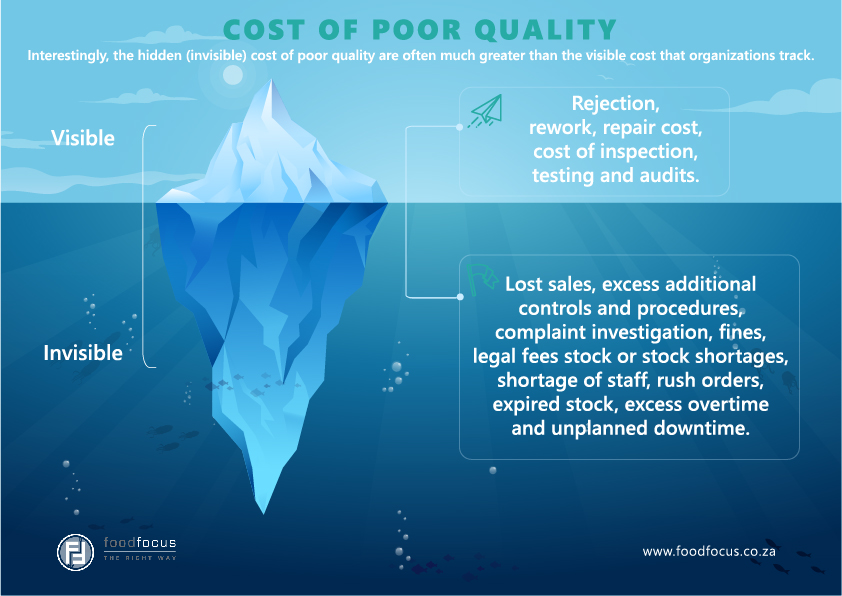What is Cost of Quality (COQ) - CoQ = CoGQ + CoPQ
Appraisal Costs
Ever had a conversation with your boss about how costly the food safety and quality management systems are? As food safety and quality professionals, we are often ill-equipped to have these financial discussions.
Well, perhaps you need to introduce the Cost of Quality thinking. Then you can talk your boss’ language
There is Cost of Quality is a methodology used to define and measure where and what amount of an organization’s resources are being used for prevention activities and maintaining product quality as opposed to the costs resulting from internal and external failures. The Cost of Quality can be represented by the sum of two factors. The Cost of Good Quality and the Cost of Poor Quality equals the Cost of Quality.
By measuring these costs, you will soon see if where the problems are. Investing in the Cost of Good Quality does not necessarily mean that the overall Cost of Quality will increase. In fact, when the resources are invested in the right areas, the Cost of Quality should decrease. When failures are prevented/detected prior to leaving the facility and reaching the customer, the Cost of Poor Quality will be reduced.
The Cost of Good Quality (CoGQ=PC + AC)
1. Prevention Costs
Costs incurred from activities intended to keep failures to a minimum. These can include, but are not limited to, the following:
1. Establishing Product Specifications
2. Quality Planning
3. New Product Development and Testing
4. Development of a Quality & Food Safety Management System
5. Proper Employee Training
2. Appraisal Costs
Costs incurred to maintain acceptable product quality and safety levels. Appraisal costs can include, but are not limited to, the following:
1. Receiving Inspections
2. Process Controls
3. Check Fixtures
4. Quality & food safety Audits
5. Supplier Assessments
The Cost of Poor Quality (CoPQ=IFC + EFC)
3.Internal Failures
Costs associated with defects found before the product or service reaches the customer. Internal Failures may include, but are not limited to, the following examples:
1.Excessive Scrap
2.Product Re-work
3.Waste due to poorly designed processes
4.Machine breakdown due to improper maintenance
5.Costs associated with failure analysis
4.External Failures
Costs associated with defects found after the customer receives the product or service. External Failures may include, but are not limited to, the following examples:
1.Product replacement costs
2.Customer claims Claims
3.Customer Complaints
4.Product or Material Returns including recalls
5.Incorrect Sales Orders/credit notes
6.Incomplete bill of materials
7.Shipping Damage due to Inadequate Packaging





